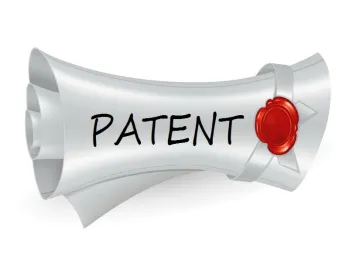The Federal Circuit on Tuesday ruled that the 180-day notice of commercial marketing provision of the Biologics Price Competition and Innovation Act (BPCIA) is a requirement for all biosimilar applicants regardless of whether or not a biosimilar applicant has elected to initiate the “patent dance,” i.e., the statutory patent information exchange and litigation procedure provided in the statute. The decision in Amgen Inc. v. Apotex Inc., No. 2016-1308 (Fed. Cir. July 5, 2016) is a key victory for Amgen in its ongoing litigation with Apotex over Apotex’s attempt to obtain FDA approval to market a biosimilar version of Amgen’s biologic Neulasta® (pegfilgrastim). Apotex’s biosimilar application, which was filed in October 2014, remains under FDA review, and the parties are embroiled in patent infringement litigation stemming from Apotex’s filing of that biosimilar application. The decision here has major implications for the emerging US biosimilar industry.
Background
Tuesday’s decision is the second instance in which the Federal Circuit has interpreted provisions of the US biosimilar statute, and it comes almost one full year after the court’s decision in Amgen v. Sandoz, 794 F.3d 1347 (Fed. Cir. 2015). In that first decision, the Federal Circuit held that a biosimilar applicant cannot be compelled to provide the reference product sponsor with notice of the acceptance of the biosimilar for FDA review and the corresponding process information which is necessary under the BPCIA to trigger the patent dance. The court there also addressed the 180-day notice of commercial marketing, holding that such notice must be given only after FDA licensure of the biosimilar product and that pre-licensure notices are ineffective.
In the present case, Apotex sought to distinguish its situation from the facts in Amgen v. Sandoz by arguing that the 180-day notice provision is not mandatory where a biosimilar applicant has initiated the patent dance. Apotex had filed its biosimilar application in October of 2014 and the FDA accepted it for review on December 15, 2014. Apotex then elected to provide Amgen with a copy of its biosimilar application and information regarding its pegfilgrastim manufacturing process, which triggered the patent dance. Amgen and Apotex followed the patent information exchange procedures and ultimately agreed on the patents Amgen would assert in the first wave of patent litigation, which resulted in Amgen filing suit on August 6, 2015. See Amgen v. Apotex, No. 0:15-cv-61631 (S.D. Fla. filed August 6, 2015). Only one patent is currently at issue in that infringement suit.
The merits of that infringement suit were not addressed by the Federal Circuit’s recent decision. Rather, at issue was Amgen’s preliminary injunction motion to compel Apotex to provide the 180-day notice of commercial marketing if and when it receives licensure of its biosimilar product. (Slip op. at 3). Apotex had attempted to provide its 180-day notice while engaged in the patent information exchange and before the product was licensed. The Federal Circuit then issued its decision in Amgen v. Sandoz which made clear that such pre-licensure notice was ineffective. Apotex did not dispute this, but rather relied on some arguably ambiguous language in that decision for its position that, because it engaged in the patent dance, it is not required to provide the 180-day notice of commercial marketing.
Amgen filed its preliminary injunction motion and the district court sided with Amgen. In granting the preliminary injunction, the district court quoted the panel in Amgen v. Sandoz for the principle that the 180-day notice provision is meant to provide “a defined statutory window during which the court and the parties can fairly assess the parties’ rights prior to launch of the biosimilar product.” Amgen v. Apotex, slip op. at 14. The district court concluded: “[t] hat defined statutory window exists for all biosimilar products that obtain FDA licenses, regardless of whether the subsection (k) applicant complies with [the patent dance provisions].”
The Federal Circuit Decision
On appeal to the Federal Circuit, Apotex advanced three main arguments against Amgen’s preliminary injunction motion. First, it asserted that Amgen v. Sandoz held that the 180-day notice provisions is mandatory only for biosimilar applicants who, like Sandoz there, did not initiate the patent dance. Apotex argued that it could not be compelled to provide such notice since it had engaged in the patent dance with Amgen. Second, Apotex raised a policy argument that had already been dismissed by the court in Sandoz – that requiring the 180-day notice after licensure effectively extends, by six months, the 12-year exclusivity period for biologics, which is contrary to the public policy underlying the BPCIA. Finally, Apotex asserted that the BPCIA provides the sole and exclusive remedy for failure to comply with the 180-day notice provision, which is a declaratory judgment action and not a preliminary injunction motion.
In siding with Amgen, the Federal Circuit panel rejected each of these arguments in turn. The court noted that the 180-day notice provision is “categorical” and “contains no words that make the applicability of its notice rule turn on whether the applicant took the earlier step of giving the (2)(A) notice that begins the [patent] information exchange process.” Id. at 15. The court also cited to the Sandoz decision for the notion that the 180-day notice is a “standalone notice provision,” and found that there “is no other statutory language that effectively compels a treatment of (8)(A) as non-mandatory.” Id. at 16.
The court also dismissed Apotex’s argument about the additional six-months of exclusivity, noting that the 12-year date provided in the statute is intended to be the earliest possible date for licensure and not the latest. Moreover, the court stated that “it is implicit in the Biologics Act that any such delay beyond 12 years should occur less and less as time goes by” because more and more biosimilar applications will be filed long before the 12-year period of reference product exclusivity is expired. Id. at 17. Finally, the court rejected Apotex’s argument that a declaratory judgment action was the sole and exclusive remedy available to Amgen for the failure to provide effective notice. The court distinguished the 180-day notice provision from the notice and manufacturing provision that initiates that patent dance, finding that there is no other provision in the statute providing an exclusive remedy and the court refued to infer an exclusive-remedy conclusion from § 262(l)(9). Id. at 21.
Implications of the Decision
The court’s decision here reflects a greater familiarity with and understanding of the complex provisions of the BPCIA and how they interrelate. Whereas the panel decision in Amgen v. Sandoz was fractured, with different majorities for each of the key holdings, the decision here was by an entirely different, but unanimous, panel. The court spent some time to explain how the BPCIA establishes a “two-stage litigation scheme” and, by providing a series of penalties and incentives, channels the parties into utilizing that scheme to resolve biosimilar-related patent disputes in an orderly and expeditious manner.
One particularly interesting aspect of the decision is the court’s explicit suggestion that the FDA can license a biosimilar product prior to the expiration of the reference product’s 12-year period of exclusivity but delay the effective date of that licensure until after the exclusivity period has expired. This notion was implicit in the court’s previous decision in Sandoz, but the court here goes further saying: “we have been pointed to no reason that the FDA may not issue a license before the 11.5-year mark and deem the license to take effect on the 12-year date – a possibility suggested by §262(k)(7)(A)’s language about when the FDA approval may “be made effective.” Id. at 17. Such a delayedeffect licensure would of course eliminate the concern regarding the de facto six-month extension of the 12-year period of exclusivity. But while there is no provision in the BPCIA that expressly prohibits this, neither is there a provision that provides for it. To date, the FDA has been silent on this issue.




 />i
/>i
